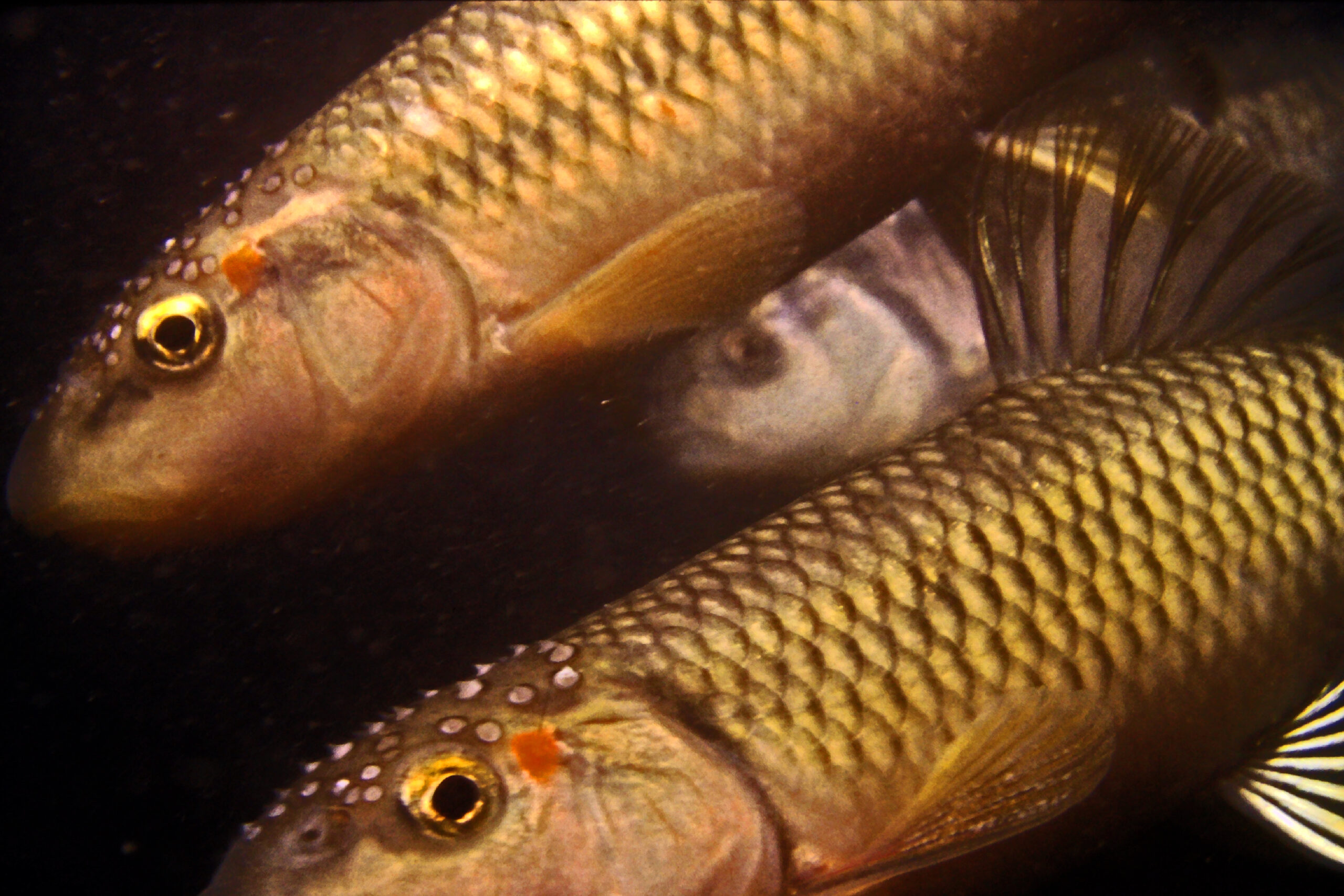
 I Speak for the Fish is a monthly column written by Great Lakes Now Contributor Kathy Johnson, coming out the third Monday of each month. Publishing the author’s views and assertions does not represent endorsement by Great Lakes Now or Detroit Public Television. Check out her previous columns.
I Speak for the Fish is a monthly column written by Great Lakes Now Contributor Kathy Johnson, coming out the third Monday of each month. Publishing the author’s views and assertions does not represent endorsement by Great Lakes Now or Detroit Public Television. Check out her previous columns.
I’ve watched hundreds of lake sturgeon spawning and observed many different species guarding nest sites. But when it comes to nest building, hornyhead chubs rank among the coolest I’ve seen.
I read about how male hornyheads build nests on the bottom by moving rocks but I was not prepared for the size and quantity of rocks that I watched one male move.
I was grateful when a group of smallmouth bass hovering near a piling, their eyes and bodies fixated on the bottom, drew my attention. If not for the bass, I likely would have missed the entire chub show.
I sided up to the bass but it took me a long minute to pinpoint the tiny fish on the bottom. The chub was only about 5 inches long. Small enough to fit comfortably in the palm of my hand.
I concentrated my curious gaze on him with the same focused intensity as the hungry smallmouth surrounding me.
The chub was preparing a nest site on the river bottom by moving rocks but he was not using his tail to fan the stones away as I had seen bass and sunfish do. This guy was picking the rocks up with his mouth.
The chub locked his lips onto each stone much like the industrial suction-clamps glaziers used to lift large sheets of glass. Some of the stones were so large they obscured the chub’s head yet he moved with ease, never slowing his pace.
I watched as he completely covered the bottom of his circular nest with a single layer of stones. He placed each one with the precision of a seasoned bricklayer. When he was done, the bottom of the nest resembled a stone mandala.
Then, a female appeared out of nowhere.
Had she been watching and waiting nearby? I was so engaged with the male’s rock lifting that I had no idea where she came from. She didn’t stay long. After a quick spin around the nest, she released a few catches of eggs and swam away.
The male immediately began moving rocks. He latched onto stones outside the nest’s perimeter and carried them to the inside where he carefully covered the freshly-laid eggs. In just a few minutes, the eggs were completely buried.
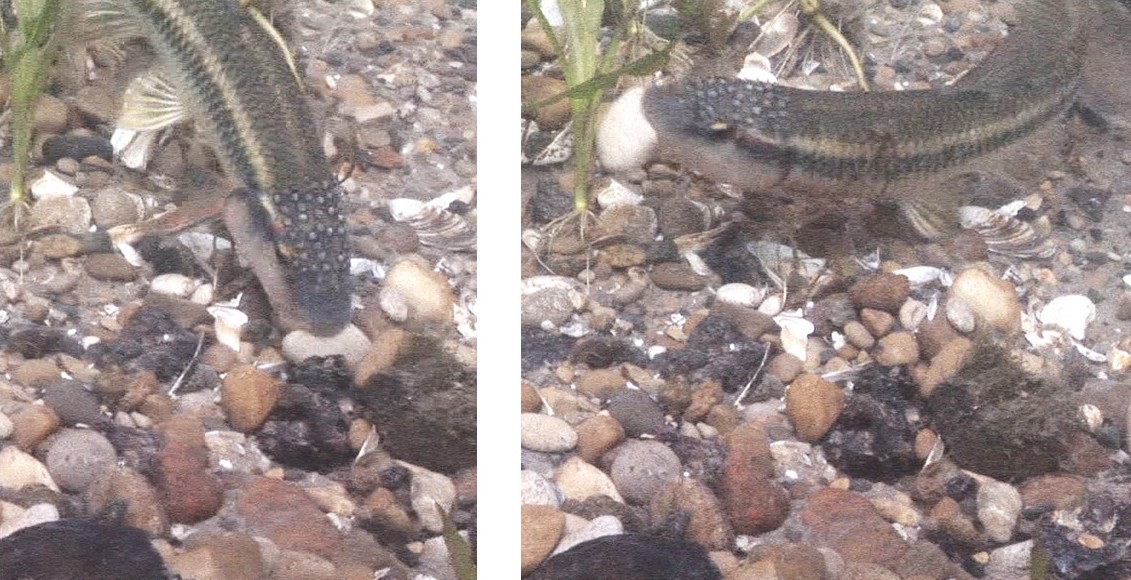
A male hornyhead chub carries a rock to his nest site. Ida red apple. (Photo Credit: Greg Lashbrook/PolkaDot Perch)
As soon as he finished, another female appeared. Or was it the same one? I had no idea but she repeated the process of circling the nest and depositing some eggs.
Over the next 30 minutes, the process was repeated over and over and over again.
When the spawning ended, the chub had built a structurally sound pile of rocks 2 feet in diameter that rose 8 inches off the bottom. The pile was so well-crafted that there was nothing to suggest it contained thousands of eggs.
I could have swam right over it without giving it a second glance.
Daughters of the Moon
Male hornyhead chubs develop distinct bumps on their heads. These bumps, called nuptial tubercles, become more pronounced when spawning. While practical in terms of description, hornyhead sounds like a name a bully would use on a playground.
The Latin name for hornyhead chub, Nocomis biguttatus, is far more romantic. Nokomis is actually a traditional Ojibwe word meaning “grandmother” or “daughter of the moon.” Biguttatus means two-spotted in Latin and refers to the red dots males also display while spawning.
Hornyhead chub are large minnows although they don’t behave like the fish I think of when I hear “minnow.” Hornyheads tend to stay close to the bottom and they do not form large fluid schools like shiners and many of the other small minnows typically do.
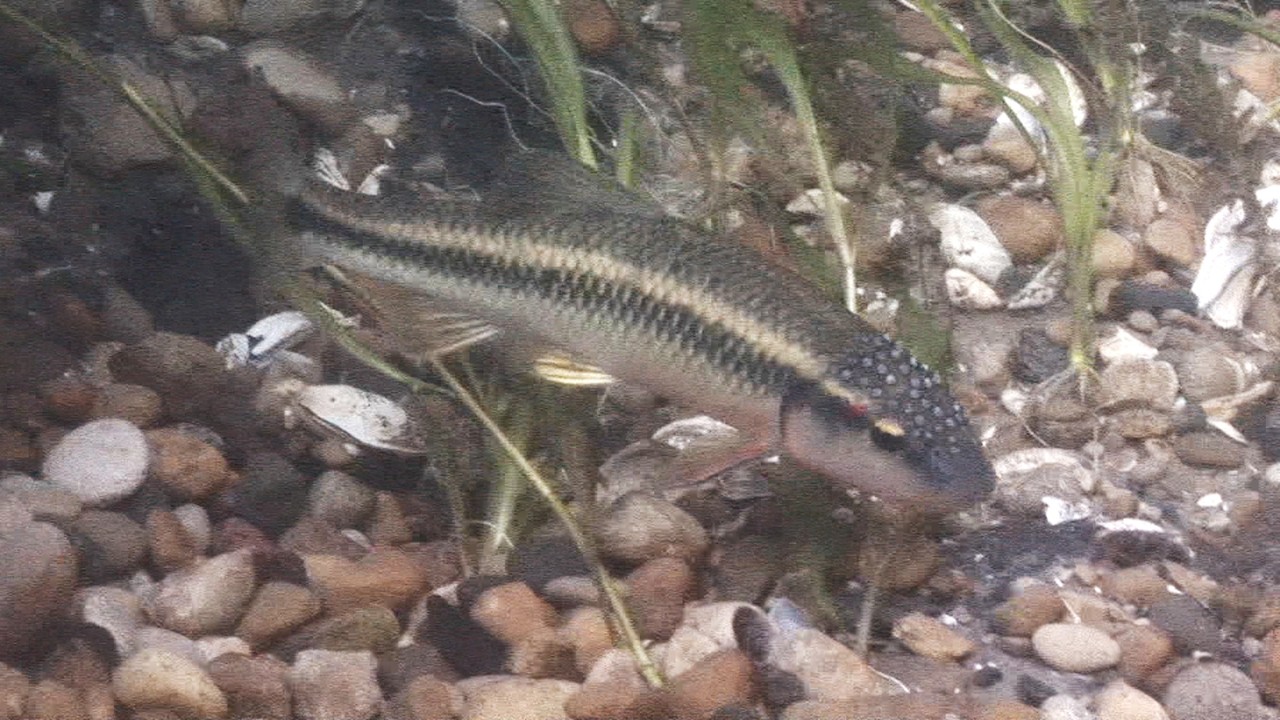
Hornyhead chubs are one of the largest minnows in the Great Lakes. (Photo Credit: Greg Lashbrook/PolkaDot Perch)
Hornyheads are also more colorful than the average minnow.
Their fins are lemony-orange while their bodies are a soft gold tone with a black spot at the base of their tails. Although, the black spots are sometimes hard to see, unlike the red dots behind the eyes of spawning males. Those beauty marks are as vivid as the skin on a sun-ripened Idared apple.
At 5 inches, the male I observed was average-sized. The Field Guide to Freshwater Fishes of Ontario notes the Canadian record as 16 centimeters or 6.3 inches and the world record at 26 centimeters, just a little over 10 inches.
Hornyhead chubs have a small barbel at the corner of their mouths which helps them to detect food. They are omnivorous, meaning they like a little salad with their supper. Their favorite treats include algae, shrimp and insect larvae.
Hornyheads are native to North America and can be found in river systems from New York to Wyoming and from Ontario south to northern Arkansas.
Every source I checked listed hornyhead as preferring small to medium-sized rivers with moderate currents. But in the Great Lakes, they can also be found in the quieter sections of large fast-flowing rivers like the Niagara and St. Clair.
They favor areas with rocky substrates, which makes sense given their nest-building needs.
Spawning begins in spring when the water temperature rises above 64 degrees Fahrenheit and can continue for several months with some individuals waiting until June before spawning.
Males will chase and nip any other hornyhead males or non-breeding females that pass too close to the nest site. But, surprisingly, the male hornyhead does not mind if other fish take advantage of their excellent nest-building skills.
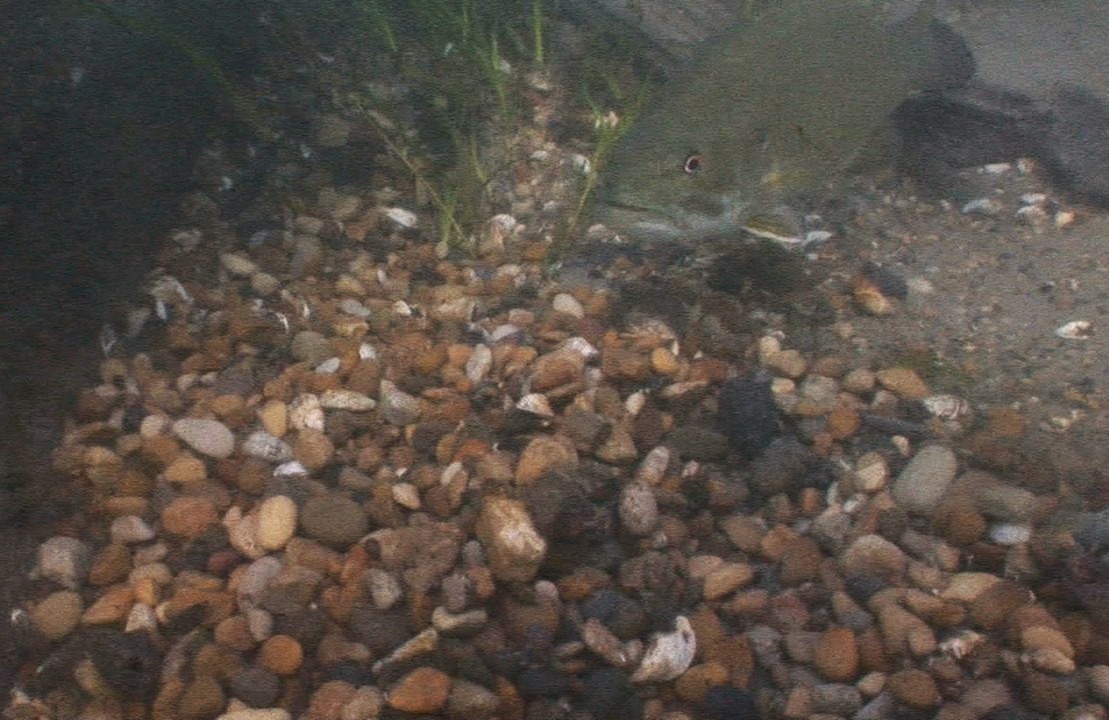
A smallmouth bass inspects a hornyhead chub nest site. (Photo Credit: Greg Lashbrook/PolkaDot Perch)
The male I was watching completely ignored a pair of common minnows that dropped into the nest and spawned. He continued moving stones and very quickly the common minnow’s eggs were covered and secured with his own.
I’ve been fortunate to witness some amazing courtship rituals over the years.
Male rainbow darters measure themselves from the ends of their tails to the tips of their noses with the biggest fish winning the female.
Male sunfish and round goby do the cha-cha and salsa to attract females into their nests.
But few can match the industriousness of hornyhead rock mounds.
Catch more news at Great Lakes Now:
I Speak for the Fish: Why do mudpuppies matter?
I Speak for the Fish: How Native Americans are saving lake sturgeon
Featured image: Male hornyhead chubs develop bumps on their heads and red spots behind their eyes when spawning. (Photo Credit: Greg Lashbrook/PolkaDot Perch)


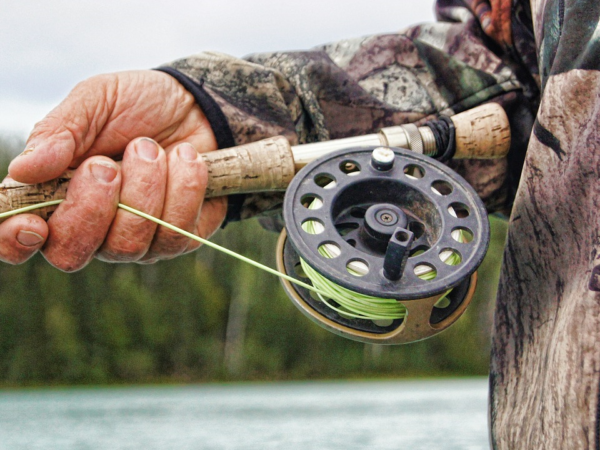

![Map showing locations of key features, or measures, of the tentatively selected plan at Brandon Road Lock and Dam. [Source: USACE]](https://d2j02ha532z66v.cloudfront.net/wp-content/uploads/2017/08/asiancarp-gl-600x360.jpg)